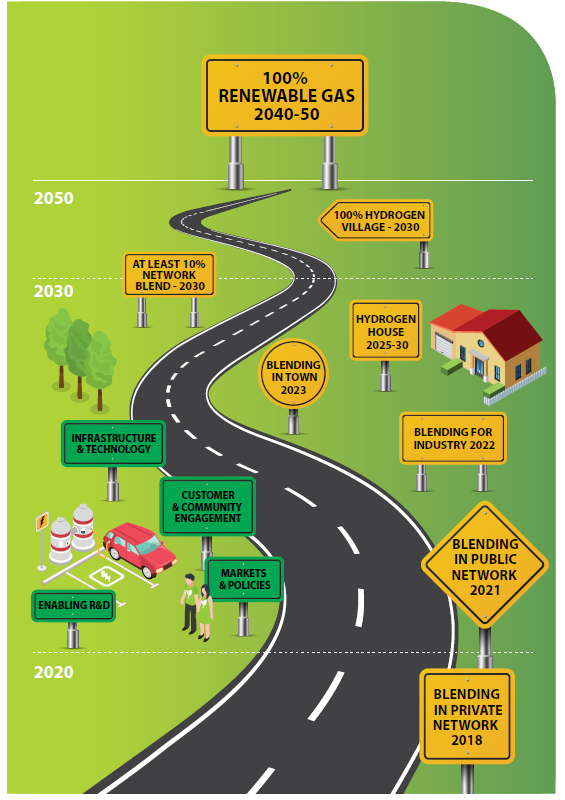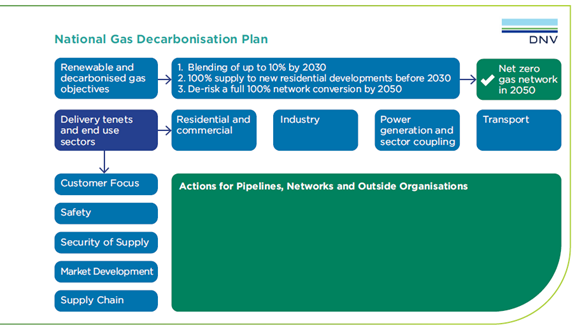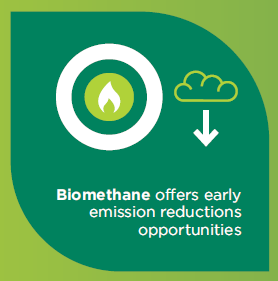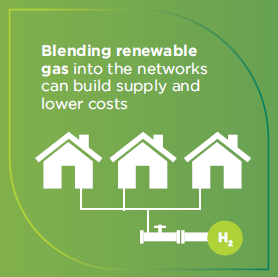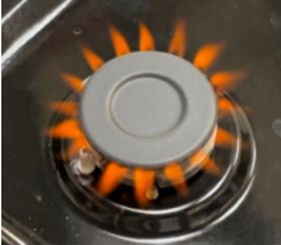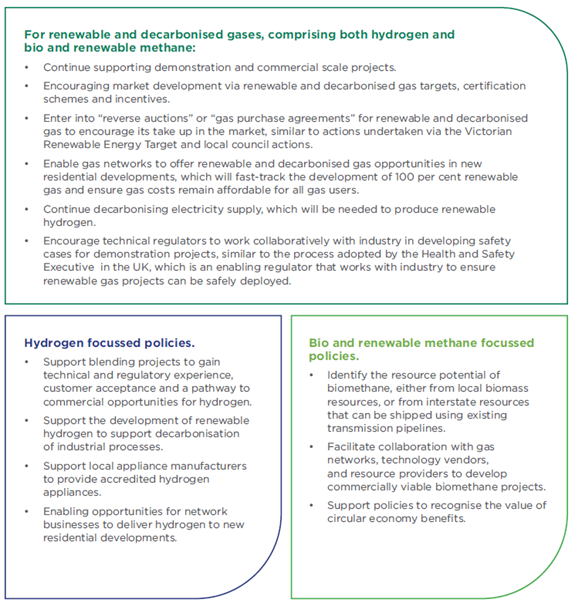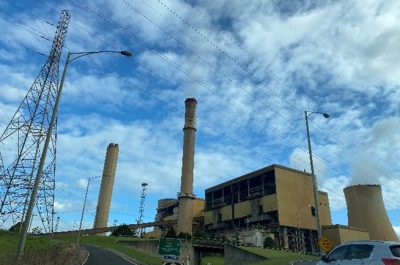What’s needed for 100 per cent renewable gas
You know the saying: “If you don’t know where you are going, any road will get you there.” But reaching net-zero is too important not to have the pathways mapped out. Australia’s gas networks have developed a high-level plan to reach net zero emissions. Read on to learn more.
Australia’s gas networks are aligned on the need to reach net zero emissions, having made commitments to doing so by 2050 or earlier. Achieving these targets will need coordinated action across many sectors of the economy.
Today Energy Networks Australia and the Australian Pipelines and Gas Association have released a plan that details what is needed to reach these decarbonisation objectives.
Gas Vision 2050: Delivering the pathway to net zero for Australia – 2022 Outlook details what actions need to be completed in the near term to achieve at least 10 per cent renewable gas in networks by 2030 and the actions to be completed for the transition to 100 per cent renewable gas by between 2040 and 2050. Blending hydrogen is already being undertaken in Adelaide[1] and Western Sydney[2] with more projects coming online on the west and east coasts in the next couple of years, including blending in towns[3].
Figure 1: High level roadmap to reach 100 per cent renewable gas by 2040 to 2050.
Australia’s gas networks worked with DNV GL to develop a detailed action plan to achieve those goals. Both hydrogen pathways and biomethane pathways were considered. Five tenets were agreed.
- Customer Focus: Consumers today benefit immensely from cost-effective and convenient gas supplies, and rely on gas for a range of services, including cooking, hot water, space heating, power generation and industrial heat and feedstock. The transition must support consumers in the residential and commercial, industrial, power generation and transport sectors to decarbonise in a cost-effective and convenient way, keeping disruption to a minimum.
- Safety: The high safety standards that exist for the current gas grid need to be maintained, through the development of the best technology and procedures for renewable and decarbonised gases across the Australian system, including the high-pressure transmission pipelines, the low-pressure distribution network, and end-user appliances.
- Security of Supply: A renewable and decarbonised gas network needs to maintain the existing high security of supply standards, with very rare unplanned interruptions, including through ensuring sufficient physical network capacity, efficient and safe system operation, and access to sufficient renewable and decarbonised gas production and storage capacity.
- Market Development: To achieve net zero, the gases in the network need to be certified as genuinely renewable and low carbon, enabling producers to produce renewable and decarbonised gases at a competitive price, with customer contracts forming the basis for project and long-term operational financing, together with appropriate market incentives.
- Supply Chain: The supply chain and skilled workforce needs to be available at the right scale and with sufficient agility to deliver the renewable and decarbonised gas transition on time, including the provision of enough appliances and other equipment, and to carry out the installations, connections, and asset upgrades safely and smoothly.
The plan can be downloaded from the ENA website: https://www.energynetworks.com.au/projects/gas-vision-2050/.
Figure 2: An overview of the national gas decarbonisation plan.
These actions were grouped as either cross cutting actions, or those specifically for hydrogen or biomethane. The actions were then assessed against ‘work in progress’ or ‘completed’ or ‘projects being planned’ to identify areas where further action is required.
Cross cutting actions
The review of cross cutting actions showed that good progress is being made with customer engagement and developing the business case for renewable gases. Work is underway to address the technical, environmental and economic regulation with the release of the papers on the reviews to the National Gas Law being noted as good progress in this area.
Market development is an area that requires further attention, especially in developing certification schemes, suitable incentives or a renewable gas target.
Biomethane actions
Biomethane is the renewably-produced equivalent of natural gas. Blending biomethane into the gas network is already widely practiced in Europe, and rapidly progressing in Australia. The main advantage of this pathway is that no changes are required to pipelines, networks or appliances.
Developing the biomethane pathway relies on supplying enough organic feedstock to replace the current volumes of natural gas. One of the main areas of action is to identify the availability of potential biomass resources that can be used to produce biomethane.
Hydrogen actions
Reaching 100 per cent hydrogen in networks will be achieved in two stages. The first is to blend at least 10 per cent into the network, followed by a second stage of conversion of the network to 100 per cent hydrogen.
The main objective of the blending stage is about engaging with customers, building scale and preparing for a conversion to 100 per cent including assessments of infrastructure suitability, scaling up hydrogen production and developing a local manufacturing capability for hydrogen appliances. The second stage would involve making modifications to infrastructure to ensure safe operation, replacing natural gas appliances with hydrogen appliances and replacing the fuel in pipelines and networks with hydrogen. Introducing the right policy options at the right time will be important to facilitate that conversion, for example, enabling the introduction of hydrogen ready appliances before the conversion is planned to take place.
The hydrogen pathway will require actions across the whole supply chain, supported by market development settings and appropriate policy options.
There are a number of hydrogen blending projects operational in Australia with more coming on line shortly. Many tests and studies have been completed to provide confidence that blending 10 or 20 per cent hydrogen in gas networks can be done safely without adverse effects on customers.
Figure 3: Hydrogen demonstration projects focusing on networks and pipelines.
Reaching 100 per cent hydrogen will require additional focus on the supply of hydrogen appliances. There is an active and successful program to develop hydrogen appliances in the UK via the Hy4Heat program This program has developed certified hydrogen cooktops, boilers, hot water systems and components for 100 per cent hydrogen applications. These are being showcased at the UK Hydrogen Home[4] in Northern England. Similar work needs to be accelerated in Australia to develop, certify and provide suitable appliances for the Australian market to enable conversion to 100 per cent hydrogen.
Figure 4: Flame on a hydrogen cooktop (Source: The HyCookers Consortium consisting of Enertek International Ltd and Glen Dimplex Home Appliances, https://www.hy4heat.info/wp4)
Policy implication
Governments also have a role to play in reaching renewable gas blends and 100 per cent renewable gases in networks. The following range of complementary no-regret policies, many of which are already in place, can support the decarbonisation of networks.
Figure 5: Policy recommendations to support the decarbonisation of gas networks.
Next steps
Transitioning to fully renewable energy is a multi-decade process. The electricity sector started this journey in the early 2000s with the introduction of the Mandatory Renewable Energy Target. Renewable generation across the NEM is currently at around 25 per cent with the intention of reaching 100 per cent by the 2040s – a total of more than four decades.
Decarbonising the gas sector shouldn’t take that long. Early progress in renewable gas is creating a pathway to reach net zero emissions. But more support is needed to develop a renewable gas market. The introduction of a renewable gas target may just be the signal needed.
[1] https://www.agig.com.au/hydrogen-park-south-australia
[2] https://jemena.com.au/about/innovation/power-to-gas-trial
[3] https://www.agig.com.au/hydrogen-park-murray-valley
[4] https://www.northerngasnetworks.co.uk/current-business-plan/our-hydrogen-home-welcome-to-green-gas/
